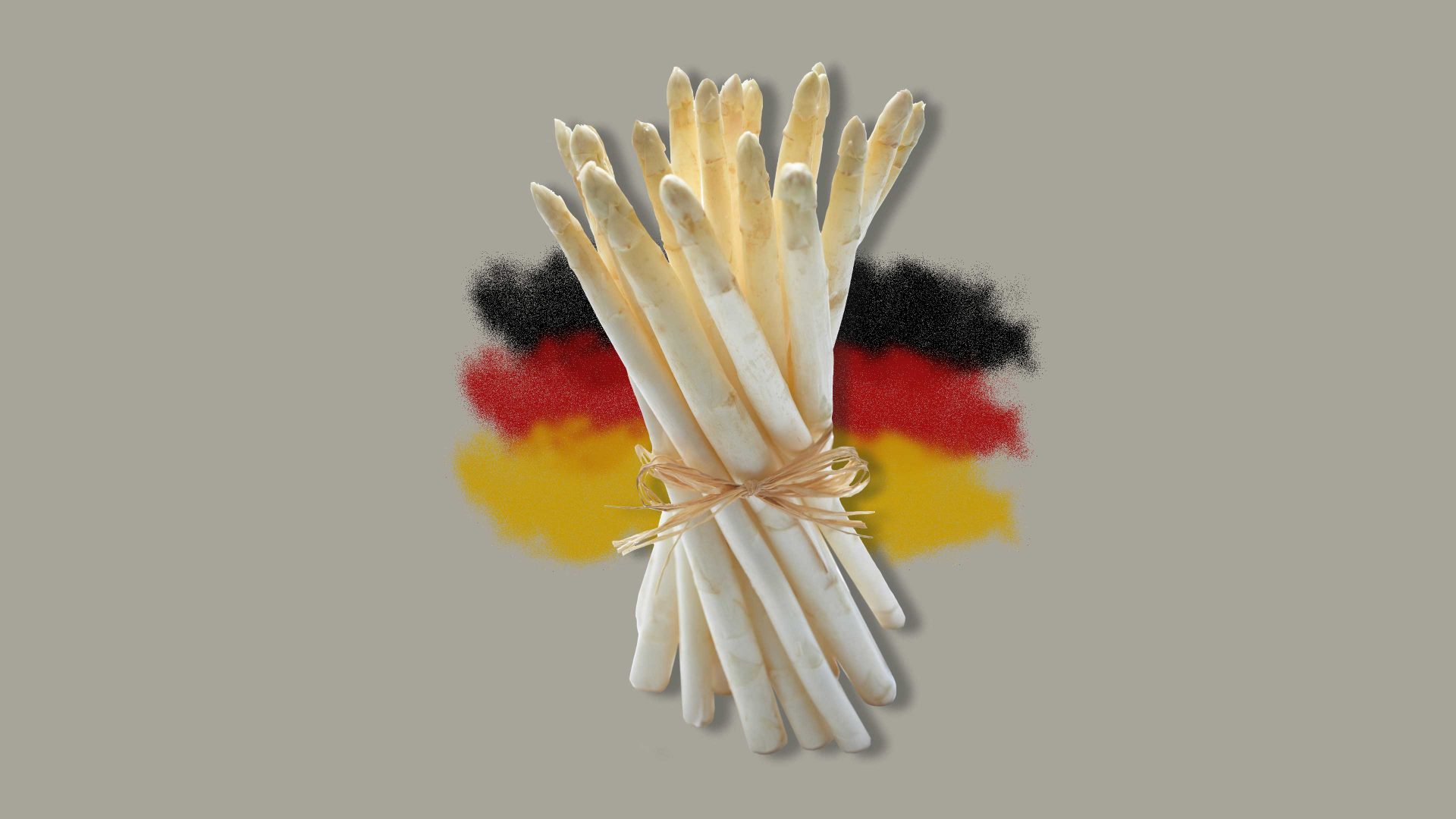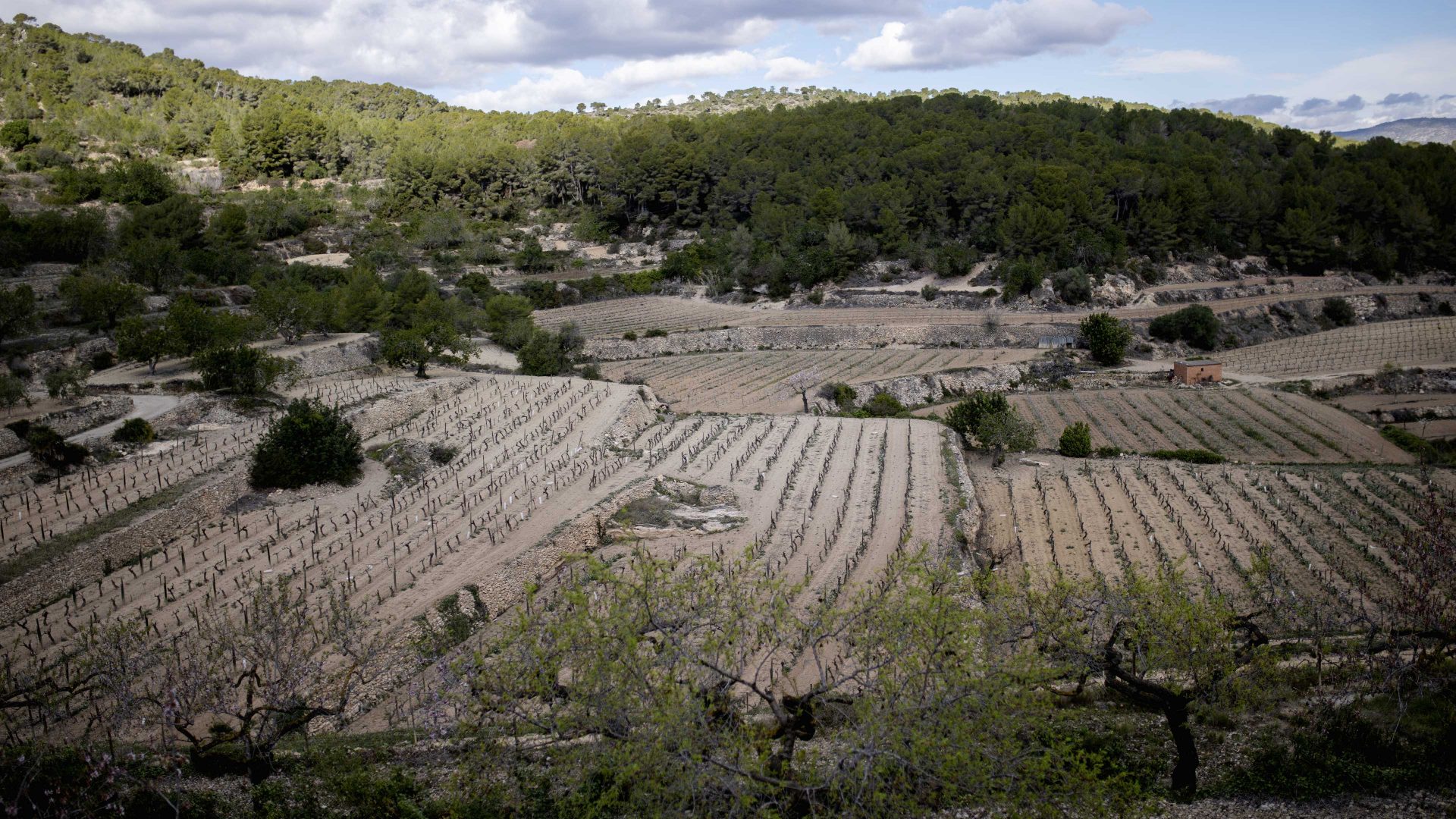A normally even-tempered friend of mine recently posted a furious Facebook comment: “Asparagus at €17.90 (£15.44) a kilo? You’ve got to be kidding me!”
Upon reading this, I assume that you now picture an overpriced bundle of green vegetable stalks in your mind.
The friend in question is German, however, as am I – and when we read or hear the word asparagus, we immediately see delicious blanched spears in front of our inner eye. For us, Spargel (pronounced: shpahgle) is white by default, we refer to its overground cousin as grüner Spargel, the one you can usually get all year.
Whereas the white asparagus season, Spargelzeit, is annually greeted with such delight (or fury, see above), non-Germans muse about our collective hysteria from early April to mid June (rule of thumb: when cherries turn red, Spargel is dead).
Right now, you can hardly find a good restaurant that doesn’t offer special Spargel-menus in Germany. Our country may not rank highly on your culinary map of Europe, but actually, when it comes to asparagus, we got it right.
Not from the start. Spargel used to be green here, too, when the Romans introduced it. They took it with them when their empire collapsed.
Centuries later, an Italian princess from Mantua married a Württemberg duke and, in letters to her mother, yearned for asparagus. Historical records document that it was eventually cultivated in Stuttgart in the mid-16th century, but as the climate was different from Italy, German engineering had to find a means to protect the stalks against frost – covering the shoots with clay hoods.
Another two centuries later, some of the hoods were apparently overlooked and, when re-discovered, snow-white asparagus had grown underneath, because without exposure to sunlight they didn’t develop the green pigment chlorophyll.
Its mild taste and noble pale appearance immediately turned the albino variety into a royal trend. More sophisticated ways to grow large amounts underground were developed, making it accessible for the bourgeoisie, too, and Spargel-fanaticism conquered the country.
Our love for Spargel is reflected in numbers: today, 17% of German agricultural land for vegetables is reserved for growing Spargel – that’s around 20,000 hectares, significantly more than onions or carrots.
When I recently turned up at airport security en route to Spain, my travel companions (40 shiny white stalks wrapped in a moist kitchen towel and a plastic bag) were detected by the scanner, but none of the security staff were remotely surprised that I should bring the main ingredient for a proper Spargel-feast to underdeveloped green asparagus territories, where a couple of German expats eagerly awaited my delivery. If you thought we ran only on sausage, think again.
Spargel is low in calories, high in vitamins and minerals, but it also remains a diva. It takes years to cultivate, it likes its surroundings to be heated and it absolutely demands to be hand-picked, dug up manually.
High-quality Spargel should be straight and should measure 25cm. Farmers say that on a warm day the stalks can grow 6cm in 24 hours. Experienced Spargel-Stecher used to come from Poland, but now Poles make up only a third of the workers.
Two thirds are Romanian; they pick 20 kilos an hour and have been entitled to minimum wages (£10.69) for a few years.
The green variety is more easy to harvest, as it is cut above ground, but there’s one thing the two have in common: your pee smells funny within 15 minutes of having eaten either white or green asparagus. When digested, asparagusic acid dissolves into sulphuric compounds – hence the smell. If you don’t know what I’m talking about, you either have a gene that impedes this specific perception of odour, or you lack the enzyme that creates the smell in the first place.
All the more reason to figure out where to get white asparagus in the UK. Peel it (below the head), cut off the sometimes woody bottom, cook (or bake) it al dente – and then enjoy the white gold.
Spargel traditionally rests in salty, melted butter with a bit of lemon juice or is covered by a spoonful of Hollandaise sauce. Even Schnitzel takes second rank to it, as a side dish.
Thin slices of cured or smoked ham and boiled potatoes (my favourite Kartoffel-variety runs by the name of Sieglinde) are equally capable companions, and of course a crisp, light Riesling or Weißburgunder.
So the question is not: why are Germans obsessed with Spargel? The question is: why aren’t you, too?




